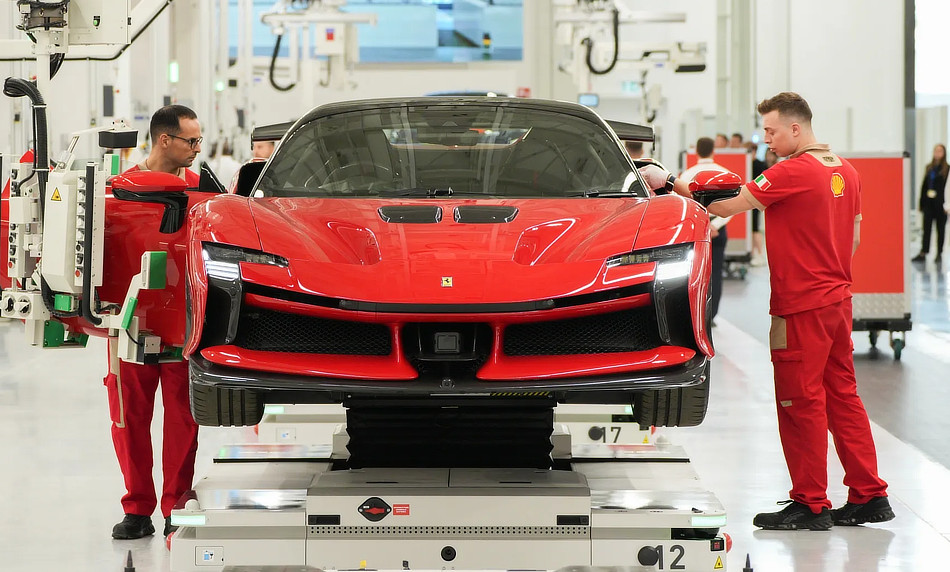
By DCB Editorial, June 18, 2025
Ferrari has postponed the launch of its second fully electric vehicle (EV) from 2026 to at least 2028, signalling a strategic recalibration in response to weak customer demand. The decision reflects both current market dynamics and longer-term uncertainties regarding consumer willingness to adopt electric drivetrains in the supercar category.
The core issue lies in a persistent demand-side constraint: affluent consumers—the primary market for Ferrari—continue to value the sensory and performance attributes of internal combustion engines, particularly the “roaring” auditory experience that EVs inherently lack.
Electric vehicles face significant technological constraints in this segment, namely excessive battery weight and a relative inability to deliver sustained high-performance output, undermining the traditional value proposition of a Ferrari.
Although Ferrari will proceed with the staged launch of its first EV starting in late 2024—with initial deliveries projected for October 2026—the delay of the second model suggests that real, sustainable demand for electric supercars has not materialised at the required scale.
From a supply-side perspective, this delay affords Ferrari additional time to advance proprietary EV technologies, potentially improving cost-efficiency and performance parity with combustion engines.
In effect, Ferrari’s decision underscores the asymmetry in EV adoption across automotive market segments. While mass-market and premium EVs have achieved notable penetration, the ultra-luxury performance segment remains highly resistant, highlighting a gap between regulatory momentum toward electrification and consumer preference realities at the top end of the market.







